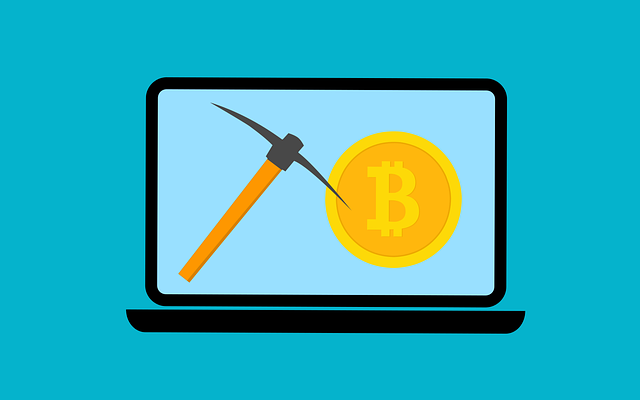How does crypto mining work? Let’s start with the basics: A cryptocurrency is a digital asset designed to work as a medium of exchange that uses strong cryptography to secure financial transactions, control the creation of additional units, and verify the transfer of assets. This anonymous way for people to transact online using virtual money – bitcoin being one type – has captured much attention since it was introduced in 2009.
Crypto Mining
Crypto Mining is defined as an important part of securing new blocks on Bitcoin’s Blockchain. The job primarily entails ensuring all transactions within a given block are valid (only including those from addresses that have been correctly mined) and that no rules or regulations were broken during the mining process.
For Bitcoin, this is done by a complex algorithm which makes it so only 21 million Bitcoins will ever exist and that these coins can’t just be created overnight. This security system works through miners verifying transactions on each block in the chain – they do this work to receive bitcoins for their efforts as payment (kind of like how you might get paid $500 if your boss wanted you to do some accounting instead). This verification also ensures that no one else has been able to create new blocks without permission or tampered with any transaction records while doing so.
Where does the term “mining” come from?
One of the original motivations for mining was to keep Bitcoin transactions irreversible by making them difficult to undo. Mining creates a time-stamped record that cannot be changed without redoing the work, requiring an overwhelming amount of computing power and money to go back through every block on the chain. The term comes from an analogy where miners are “seeking” new bitcoins as if they were digging valuable metals out or precious stones.
Crypto mining is also a metaphor for how people can use their resources (time and energy) to build up to something greater; just like gold miners who spend weeks seeking treasure deep underground.
So what does crypto mining do? What’s all this have to do with my computer running slow? Let’s get into the specifics of what crypto mining is and why it may be causing your computer to slow down.
Bitcoin mining
Bitcoin Mining, or “Mining” in general, works by adding a block of transactions on top of the previous one (think about building blocks). Each transaction must meet certain requirements for success – these are called consensus rules. When you’re mining for Bitcoin, this means that all entries within a given block need to have come from an address that has been mined correctly before. If someone were able to rewrite their own transactions so they end up being processed twice instead of once then there’s no way for other miners to verify this transaction without going back through every single block entry since the beginning; which would take too much time and energy because it’s impossible to tell which transaction is the “real one.”
The result of this mining process for Bitcoin or any cryptocurrency is that transactions are validated and made irreversible so there’s no risk of someone being able to tamper with them later on. This also prevents people from spending their Bitcoins more than once – in other words, it helps keep transactions transparent.
How does crypto mining work?
Mining allows miners to get rewarded with a coin as compensation for validating blocks of transactions against consensus rules; they do this work by solving math problems like puzzle pieces (which we call Proof-of-Work) where they compete against each other around the world at the same time. The first miner to find an answer gets paid with new coins – but not before other miners have had another chance to solve the problem and get rewarded themselves.
Crypto mining is a process in which transactions are validated by solving math-based puzzles, often using computer processing power. The first miner to find an answer gets paid with new coins – but not before other miners have had another chance for their own reward at finding solutions too. In Bitcoin’s case, these “solutions” come as rewards for confirming blocks of transactions against consensus rules; they do this work by solving puzzle pieces (which we call Proof-of-Work) where they compete against each other around the world simultaneously.
The result from all this mining? Transaction validation prevents people from spending Bitcoins more than once or tampering with them later on.
Why mine crypto coins?
Mining coins is an easy way to make money. You can use your computer’s CPU or GPU and it will be profitable for you if the price of a cryptocurrency goes up. It takes time, but no investment in equipment other than a powerful computer with a good graphics card. This option might not be some people’s cup of tea because it could take years before they see any payout.
Where can I get started with crypto mining?
- You need computer hardware, a processing unit, and GPU (graphics processor) with video memory. For your CPU, you’ll want one that has at least two cores and supports SSE instructions; for your graphics card, go for the latest model as of this writing.
- Download mining software from various websites – some are free while others require payment. The most popular ones include Kryptex and Cudo Miner. These packages will take care of all the hard work in getting your miner up and running so you can start earning Bitcoin or other cryptocurrencies right away!
- There is no such thing as “free money” when it comes to crypto mining—it all costs money. You have to invest in costly hardware, electricity, and time before you can earn any crypto coins. Mining is still profitable, but it does require some startup capital.
- Maintain your computer with the latest software updates from the company that makes it; this protects against viruses or other malware which could steal your mining power for their own purposes! Remember to also keep a backup of important files on an external hard drive—things like wallet information, bitcoin addresses etcetera so they don’t get lost should something happen while trying out different hashing algorithms. When deciding how much computing power one needs, remember that more powerful CPUs will require better graphics cards as well.
- Once complete with the setup of your mining rig (or rigs), start digging through data about who is paying what prices for coins with the software you are using. The one that pays out the most for your computing power is likely going to be Bitcoin, so if you’re interested in mining other coins then research and compare what they’ll pay per kilowatt-hour (kWh) of electricity used as well.
- Depending on how much computer hardware each rig has, it can take anywhere from a few days to weeks before profitable amounts start coming in! Your best bet is usually just spinning up all of them at once and seeing which ones come online first – this way you will earn more even though some machines won’t run indefinitely due to high heat or noise levels. You may also want to consider remote hosting where someone else hosts your processing units at their own location.
- You may also be interested in monitoring tools like Coinwarz which can help predict trends and earnings potential by using Bitcoin as an example (which is considered “the gold standard” of cryptocurrencies).
It takes both computing power and electricity to mine crypto coins – without either one, there would be no way for new currency units to enter circulation! For miners who are just getting started in the world of cryptocurrency, these two pieces of hardware should suffice CPU and GPU, with an SSE-capable CPU; and mining software.
The key to successful crypto mining is figuring out which coins pay the most for your computing power—Bitcoin is usually going to be the one that pays out in this regard so it’s a good place to start! When deciding how much money you want to spend on hardware, remember that more powerful CPUs will require better graphics cards as well because they both use electricity. You may also want remote hosting where someone else hosts your processing units at their own location – this way you can earn while your machines are offline.
If something happens during the setup of your rigs such as malware or viruses stealing energy from them, make sure backup copies of important data are available like wallet information, bitcoin addresses, and other important information.
What are the risks of mining cryptocurrency?
The risks of mining cryptocurrency can be both financial and environmental. Environmental risk is associated with the consumption of natural resources to produce electricity for crypto mining; while financial risk stems from investing in expensive equipment, paying power bills, and maintenance fees.
Mining cryptocurrencies has become a lucrative source of income for many people as well as big corporations around the world. Those who can mine coins will have their own custom-made rigs that could consume anywhere between 1500-2000 watts per hour just so that they can earn money by solving increasingly difficult puzzles–a process known as ‘mining’. The more time it takes miners or companies to solve these complex mathematical riddles – called hashes – the higher chance they might eventually get rewarded with some sort of digital currency.
The incentive for mining is to solve the puzzle to receive a reward, be it Bitcoin or something else. Once you have solved this problem and ‘mined’ your coins, there are risks that come with crypto mining – financial as well as environmental- which should not be overlooked when considering whether to get involved in the cryptocurrency mining business.
One of these risks is related to electricity consumption; more specifically, how much power one will need for their rig to run 24/hrs without interruption in terms of solving puzzles and getting rewarded with some form of earnings from cryptocurrencies mined–be it bitcoin or another type of virtual coinage like Ethereum or Litecoin (or any other). To summarize The more time it takes for the miner to solve these increasingly difficult puzzles, the higher chance they might eventually get rewarded with some sort of digital currency.
The second risk is financial: Mining cryptocurrency requires a high investment in expensive equipment that will need to be paid off as well as power bills and maintenance fees.
Notice: Information contained herein is not and should not be construed as an offer, solicitation, or recommendation to buy or sell securities. The information has been obtained from sources we believe to be reliable; however, no guarantee is made or implied with respect to its accuracy, timeliness, or completeness. Authors may own the cryptocurrency they discuss. The information and content are subject to change without notice. Visionary Financial and its affiliates do not provide investment, tax, legal, or accounting advice.
This material has been prepared for informational purposes only and is the opinion of the author, and is not intended to provide, and should not be relied on for, investment, tax, legal, accounting advice. You should consult your own investment, tax, legal, and accounting advisors before engaging in any transaction. All content published by Visionary Financial is not an endorsement whatsoever. Visionary Financial was compensated to submit this press release. Please also visit our Privacy policy; disclaimer; and terms and conditions page for further information.

